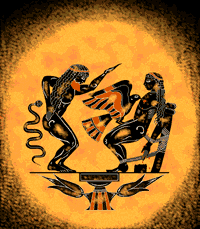PROJECTS
Human Heart Development in a Dish
One aspect of our research utilizes embryonic (hESC) and induced (hiPSC) pluripotent stem cell models of human cardiogenesis to understand the molecular and cellular mechanisms of cardiomyocyte and cardiac neural crest cell development, and their potential role in cardiac regenerative medicine.
Regenerative Biology of Cardiomyocytes
Some species, such as zebrafish and urodele amphibians, are capable of generating and regenerating heart muscle cells throughout their adult life. Mammals on the other hand lose this capacity shortly after birth. This makes humans particularly vulnerable to heart disease, as it blunts our ability to replace damaged heart muscle cells with healthy ones in response to disease (i.e. heart attack). We are employing mouse genetics to understand the mechanisms that limit adult cardiomyocyte regeneration in mammals and how to potentially reverse this therapeutically.
You can also find us:
AUTH Website
http://users.auth.gr/kchatzistergos/ and here
Social links:


